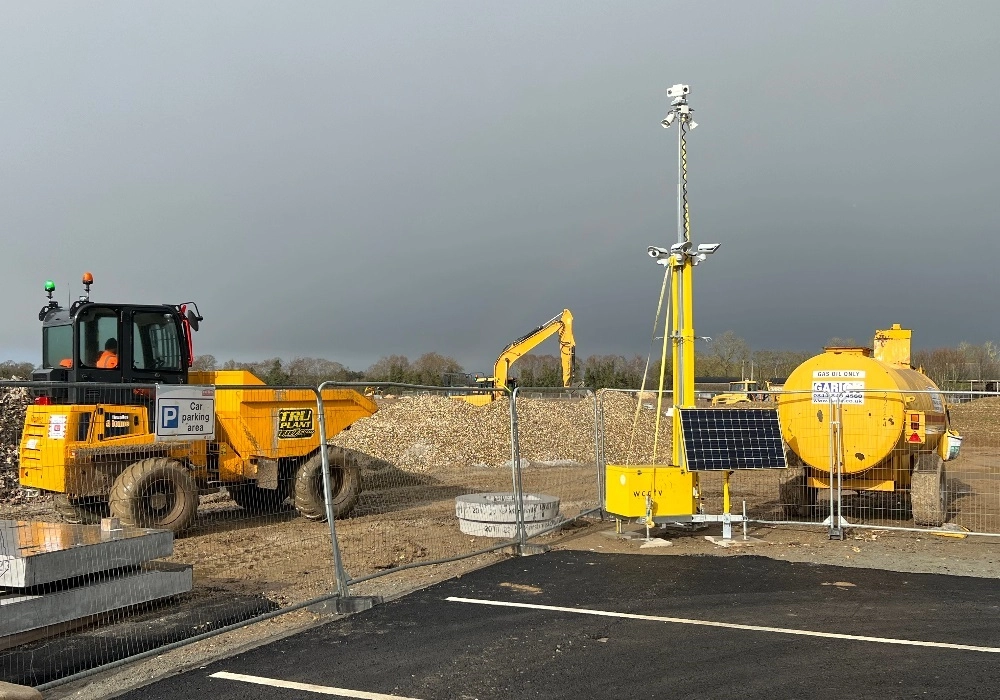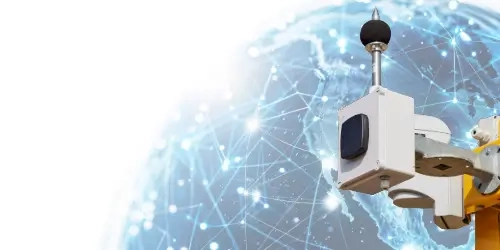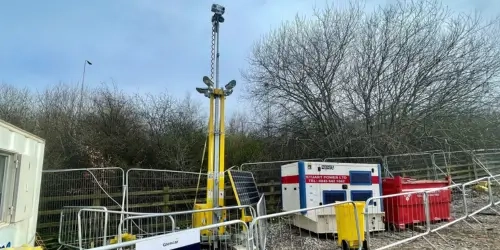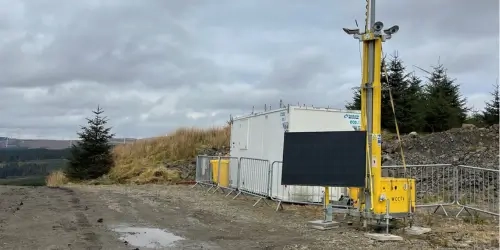Compliance leaders face several challenges, from ever-changing regulations and data privacy concerns to stretched resources and growing expectations due to greater penalties.
Particularly within construction where there’s increased dangers surrounding environmental monitoring, worker safety and increased risks of intrusions.
With all these considerations to keep in mind, we’ve formed a guide surrounding construction compliance that every leader needs to know.
Why Compliance Leaders in Construction Face Unique Pressures
Unlike your everyday office environment, construction projects produce a large amount of personal and operational data, including subcontractor details, employee records, CCTV footage, access logs and health & safety reports.
This creates complexities for compliance teams around GDPR as all of this data must be managed correctly, otherwise these data points present risks to a business.
Alongside this, ESG expectations are quickly growing. Many government bodies, clients and investors, all now require contractors and developers to demonstrate measurable progress on ethical supply chains, sustainability and workforce safety.
With over 500 construction workers are believed to die from exposure to silica dust every year alone, compliance regulations are regularly changing to protect workers, the general public and the planet from the environmental dangers posed by the industry.
But, what does this mean for compliance leaders? It’s about transitioning ESG reporting from being just marketing material to real-life, auditable evidence that displays your firm’s compliance.
Alone, these challenges are difficult for any compliance teams, but by combining them with additional industry-related issues like shifting teams, numerous stakeholder responsibilities and their temporary site status lead to a constantly changing environment that creates gaps.
Compliance teams must remain on their toes managing the new and emerging threats across a site, as well as maintaining GDPR and ESG regulations.
And this doesn’t stop on an organisation level, regulators like ICO and HSE are increasingly holding individuals accountable. This brings another layer of pressure for compliance teams.
Although teams face lean resources, outdated tools and work culture resistance, compliance teams face frequent tension from operational staff who often view compliance as red tape.
The Connection Between GDPR and Construction Compliance
The construction industry is unlikely to be the first sector individuals associate data protection with, but GDPR has transformed the way it works.
Nowadays, construction projects of all sizes involve a significant amount of personal and sensitive data, from employee records to subcontractor information. And it doesn’t stop there, other forms include:
- CCTV footage
- Biometric access controls
- Health and safety reports
- Communications with clients
All of these carry their risks, and if managed incorrectly, construction firms face fines, legal action and damaged business reputation.
One of the biggest challenges for compliance leaders is the management of multiple sites running simultaneously with one another. Although data will be collected across them all, this data will often be stored within separate systems.
And for many, these systems will be stored using manual processes or through an outdated system.
Methods like this create accuracy errors and make visibility difficult for auditors. Specifically creating issues around who holds the data, how long it’s being held for and whether it is processed lawfully.
Risks may not seem like reality, but the ICO can place severe fines of £17 million or 4% of an organisation's annual worldwide turnover, whichever is higher.
Compliance leaders face an uphill battle in bridging the cultural gap and ensuring individuals of all levels are aware of their involvement in complying with GDPR and the consequences in not doing so.
This requires transforming those views on it being a ‘back office’ concern to being a part of your construction firm’s work culture.
Ways to do this is through employee training, enhancing your compliance technology and running regular reviews yourself to assess GDPR policies.
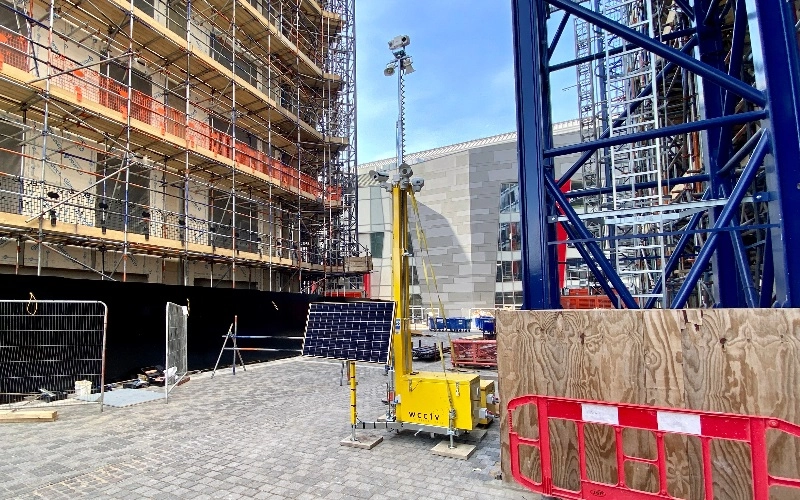
ESG in Construction: From Reporting Obligation to Competitive Advantage
Environmental, Social and Governance (ESG) criteria has grown significantly in importance over recent years, becoming a central part of compliance leaders’ responsibilities across the industry.
Given that the construction industry is a substantial contributor to greenhouse gas emissions and worker-related illnesses and deaths, ESG is no longer a ‘tick boxing’ exercise for businesses.
An estimated 5,000 construction workers suffered from a work-related breathing or lung problem (new and longstanding) during 2023/24.
Issues like poor air quality, harsh weather conditions and excessive noise all contribute to increased risk towards workers’ safety.
And the risk to workers safety is not the only concern relating to ESG, construction accounts for a large proportion of the UK’s carbon emissions and resource consumption.
This has led to increased pressures relating to environmental monitoring, with industry regulations in place to manage this and more being developed for the future.
Firms are now expected to track and disclose their environmental impact, from energy usage and material sourcing to waste management and site emissions.
Regulators, local authorities and clients increasingly demand quantifiable data, not generic sustainability statements.
Without this, firms risk losing contracts, missing out on financing opportunities and losing your competitor edge against other suppliers.
And finally, focusing on governance, construction firms are expected to demonstrate clear policies, a strong overview and transparent reporting.
Investors are looking for compliance teams to display how ESG risks are identified, managed and mitigated during projects. By not being transparent with this, you risk losing business reputation and future clients.
For firms treating ESG as a strategic opportunity rather than a reporting obligation, position themselves for growth in a market increasingly shaped by regulation and public scrutiny.
So, for compliance teams looking to gain that competitive edge, improving ESG monitoring and reporting tools like Stellifii help place this all into one platform, providing clear audit trails in which can be actioned upon.
How ESG Overlaps With GDPR?
In general, ESG and GDPR are treated separately, but all compliance leaders need to forget this way of thinking because there’s a significant amount of overlap between the two.
In particular, between Social and Governance, and personal data protection.
Protecting personal data is a core aspect of firms’ social responsibilities as it displays respect to your employees, contractors and local communities.
By safeguarding their privacy and preventing the misuse of information, you’re helping to protect your workers and any individuals’ data held from security breaches.
Strong data governance is now taken into account heavily with investors, stakeholders and clients as it’s commonly linked to organisational integrity which aligns specifically with the ‘G’ in ESG.
This emphasises that GDPR is not just a legal compliance, but a demonstration of ethical business conduct that strengthens your ESG performance as a construction firm.
However, for compliance leaders, this overlap presents both risks and opportunities which you will need to navigate.
By integrating GDPR with your ESG commitments, it can create efficiencies within your construction firm, reducing duplication, streamlining reporting and strengthening relationships, internally and externally.
However, if a failure occurs in managing any data, this undermines ESG reporting, and in doing this, raises concerns around weak governance or even greenwashing.
Technological advancements can now streamline this process, unifying ESG and GDPR into a singular platform that both protects data and creates clear audit trails that relieve responsibilities for compliance leaders and ease regulation reviews.
Key Risks Facing Compliance Leaders in Construction
The unique complexities of construction environments mean compliance leaders tend to face greater challenges than are initially imagined externally about the industry.
This landscape faces numerous regulatory obligations that are ever-changing, and aligning this with the high-pressure operations of construction projects leads to constant risks.
However, there are three key risks that consistently appear at the top of the list for most compliance leaders:
Data Breaches On Site and Via Supply Chains
Construction sites handle high volumes of personal data on a daily basis due to the numerous workers and visitors that enter each day.
All this information gathered is classified as personal information, and therefore must comply with GDPR regulations.
However, with such vast information to store, from employee records to CCTV footage, these are often kept in fragmented systems, creating a severe risk of a GDPR breach.
It only takes one incident for the ICO to take action, applying fines, legal liability and causing reputational fallout.
To minimise this risk, compliance leaders should aim to consolidate this information whilst ensuring data transparency and maintaining privacy as set out by GDPR.
Doing so will minimise points of access in case of any security breaches and create clarity on where data is stored, helping to ensure it is only kept for the necessary period of time.
Unified platforms like Stellifii combine the storage of surveillance footage with environmental monitoring and smart detection systems which capture on- and off-site information.
Built with AES256 encryption, compliance teams can be confident that all data stored remains secure from any security dangers, helping boost business reputation and trust with workers.
It also consolidates this data, replacing fragmented systems with one platform that streamlines your GDPR policies and procedures, whilst ensuring data transparency.
ESG Reporting Scrutiny and Greenwashing Risks
With ESG reporting becoming central to securing contracts due to growing regulations and public scrutiny regarding the accuracy of any disclosures, compliance teams must ensure the production of accurate information.
Publicising poorly backed evidence, inaccurate information or inflated claims can result in serious accusations of greenwashing, long-term damage to business reputation and create a lack of trust with clients and investors.
For compliance leaders, the main challenge is ensuring that all ESG metrics are creditable, consistent and verifiable across supply chains.
With many teams still working via paper-based processes or outdated systems, both of which run the risk of errors and inaccuracies.
Smart systems like Stellifii can be integrated with security solutions to monitor the environmental impact of your business, including air quality, noise and weather.
This data is captured in real time and feeds into one singular platform, ensuring accurate reporting that reflects a project’s ESG commitments.
Construction firms can share this information with investors, clients and regulators, without concern of inaccuracy or accusation of greenwashing.
Third-Party and Supply Chain Risks
Most construction projects, even those on a small scale will generally involve subcontractors, consultants and third-party suppliers.
Each individual and organisation involved brings potential vulnerabilities. You may correctly manage GDPR at your construction firm, but if third-party individuals or organisations don’t, you’re also left vulnerable to these risks also.
Regulators are increasingly holding main contractors responsible for third-party compliance, creating additional workload for compliance leaders as they are the ones tasked to enforce this.
Construction firms will expect leaders to create robust systems that assess the due diligence of their practices and monitor them to protect against any inherited risks.
At WCCTV, we’ve worked extensively and continue to do so in maintaining GDPR as a business, and when creating our smart platform, Stellifii, we wanted to alleviate this stress for compliance teams.
Through the use of environmental sensors and remotely monitored CCTV cameras, you can monitor third-party suppliers and individuals to ensure they comply with industry regulations.
For example, our PPE detection system will stream into Stellifii and if non-compliance is found, action can be taken in real time, remotely, to correct this matter and hold them accountable.
This also helps to provide evidence if a liability claim were to be placed against you and support with any audits.
Stellifii streams CCTV footage, environmental monitoring and detection information into one platform, making it easy-to-access, and helping to save time for compliance teams.

The Role of Compliance Leaders: Driving Culture, Not Just Controls
Compliance in construction, for a long time, has been considered as a set of rules, red tape and expensive penalties. Although compliance failures can be costly, these are generally misconceptions on the topic.
The most effective compliance leaders recognise that their role is not just about enforcing regulations to tick boxes, but about shaping your work culture to ensure safety and security within your organisation.
In a sector plagued with compliance challenges, centralising culture helps to ensure decisions are made on-site everyday, even when you cannot be physically present there as a leader.
Encouraging a compliance-first culture means reframing compliance from being a burden to a business booster.
The way to do this is through engaging stakeholders and clients with clear, evidence-backed insights into how GDPR and ESG performance impacts business reputation, tender success and long-term resilience.
However, compliance also needs to be built across all levels, including frontline workers, who tend to be most vulnerable to health and safety risks.
This means equipping site managers, contractors and subcontractors with practical tools and training so they see compliance as part of their job, not an extra burden on their job role.
Technology advancements play a critical role in providing support across all of your workforce, from frontline workers to investors.
There are several types of security for construction, however, the move towards AI-driven enhancements transforms CCTV systems from monitoring and recording devices to proactive compliance tools.
By reducing manual effort and embedding compliance into everyday systems, smart platforms like Stellifii unify key construction compliance monitoring and reporting tools with high-quality surveillance.
This allows compliance leaders to focus less on chasing paperwork and completing, and more on building a compliance culture with strong policies that align with the realities of construction sites.
From managing security breaches and construction theft to protecting contractor details and supporting worker wellbeing, smart systems help to manage multiple risks within one place.
Unified dashboard reporting provides visibility to investors, clients, site managers and frontline workers, helping display compliance and remind workers of the importance in maintaining this.
Essentially, compliance leaders who prioritise culture over obligation create construction firms that hold a competitive edge against the rest, are trusted amongst clients and are robust for the future.
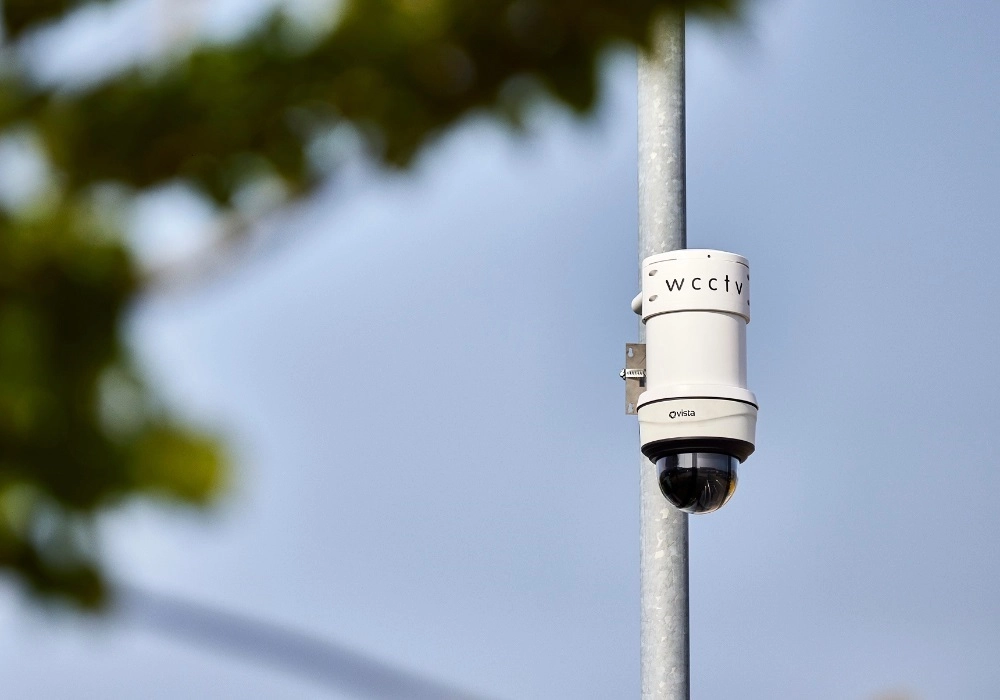
Turning Compliance into Strategic Advantage with Stellifii
GDPR and ESG are shaping client expectations, investment decisions and competitive construction project tenders. Compliance is now a defining factor in their selection process and business success.
To ensure you remain ahead of competitors, compliance leaders not only need to meet the obligations set out in these regulations, but turn them into drivers of trust, resilience, and growth.
Stellifii helps to enable this shift. Designed to be integrated alongside our CCTV Towers and Redeployable CCTV Cameras, this singular smart platform centralises GDPR and ESG into one.
This system helps to automate evidence gathering, and provide real-time visibility across core areas of your construction site, including subcontractors and third-party suppliers.
Compared to competitors, Stellifii offers 4 main benefits to construction compliance:
- True 5G network transmission capabilities for wireless access to all video and data
- Stellifii is futureproof, ensuring it can adopt the latest IoT developments as and when they become available.
- Any data source plugged into Stellifii can provide live alerts with video verification to ensure proactive prevention and clear audit trails.
- Stellifii offers one core platform to access all information from monitoring sensors, detection systems and your security cameras which allows for cross functional reporting.
This forward-thinking technology helps to remove the burden of paper-based processes and prioritise culture now, and in the future.
It also reduces regulatory risks surrounding inaccuracies and poor data visibility, both of which commonly contribute to fines and legal penalties.
Data collected can be shared with stakeholders, regulators and clients to prove compliance, helping to maintain positive relationships and a good business reputation.
Compliance leaders who leverage Stellifii are moving from compliance obligation to it becoming a strategic advantage. No more firefighting, lost time or stretched resources, Stellifii aims to alleviate the compliance challenges faced by construction.
Ready to see how Stellifii can turn compliance into your competitive advantage?
